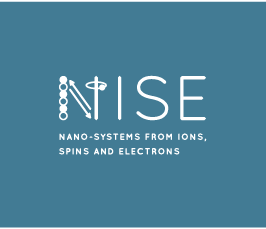Magnetoelectric effects in magnetic topological insulator heterostructures
Seminar
- Datum: 13.09.2017
- Uhrzeit: 15:00
- Vortragende(r): Kenji Yasuda
- University of Tokyo, Department of Applied Physics
- Ort: Max-Planck-Institut für Mikrostrukturphysik, Weinberg 2, 06120 Halle (Saale)
- Raum: Lecture Hall Building B

A magnetic topological insulator (TI) with a simple 2D Dirac surface dispersion and spin-momentum locking provides one of an ideal platforms to study the magnetoelectric coupling in solids, i.e. the interaction between localized magnetism and conduction electrons. To investigate such magnetoelectric effects, we study magnetic TI heterostructures composed of Crx(Bi1−ySby)2−xTe3 grown with molecular beam epitaxy (MBE) [1,2]. First, we report the observation of unidirectional magnetoresistance (UMR), where the resistance value is shown to be dependent on the current direction, namely, a diode effect. From the magnetic field and temperature dependence, the UMR is identified to originate from the asymmetric scattering of spin-momentum locked surface Dirac electrons by magnons [3]. Also, we realized current pulse induced non-volatile magnetization switching in a magnetic TI with the spin-orbit torque (SOT) caused by the spin accumulation at the surface state. The required current density is shown to be much smaller than other materials, showing the potential of TI as spintronic materials [4].
Quantum anomalous Hall effect (QAHE) is another manifestation of a magnetoelectric effect in a magnetic TI, which is caused by spontaneous magnetization even at zero magnetic field [5]. We have succeeded in raising the observable temperature of QAHE using the magnetic modulation doping technique [6]. In the quantum anomalous Hall state, the chiral edge state (CES) is predicted to appear not only at the sample edge but also at the magnetic domain wall (DW) due to the discontinuous change in the Chern number. Here, we design and fabricate the magnetic domains with the tip of the magnetic force microscope, and clearly prove the existence of the CES along the prescribed DWs. Furthermore, the proof-of-concept devices based on the reconfigurable CES are demonstrated for multiple-domain configurations [7].
I will also explain the importance of MBE-based heterostructure technique to realize these intriguing spintronics functions.
[1] R. Yoshimi, K. Yasuda et al., Nat. Commun. 6, 8530 (2015).
[2] K. Yasuda et al., Nat. Phys. 12, 555 (2016).
[3] K. Yasuda et al., Phys. Rev. Lett. 117, 127202 (2016).
[4] K. Yasuda et al., arXiv:1612.06862 (2016).
[5] C. Z. Chang et al., Science 340, 167 (2013).
[6] M. Mogi, R. Yoshimi, A. Tsukazaki, K. Yasuda et al., Appl. Phys. Lett. 107, 182401 (2015).
[7] K. Yasuda et al., arXiv:1707.09105 (2017).